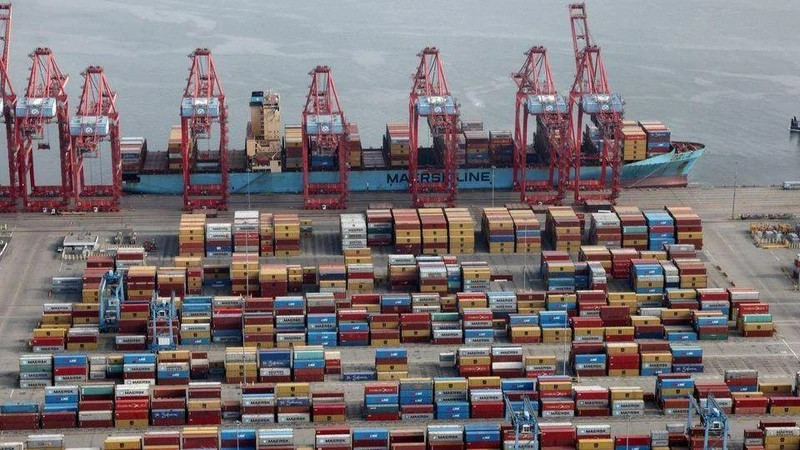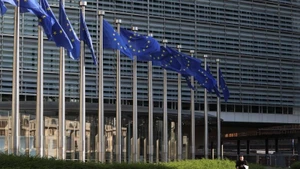In the latest report on the world economic outlook, the Organisation for Economic Co-operation and Development (OECD) lowered its forecast for world economic growth in 2023 to 2.9%, slightly lower than the previous rate of 3% released in September. For the US, the OECD raised the 2023 country's economic growth forecast to 2.4%. The economic growth of the eurozone is forecast at 0.6%, while the UK economy is growing slowly, expected at 0.5%.
Asia has witnessed positive signs as the region's economic outlook is brighter thanks to the "leverage" of policies to stimulate domestic consumption in economies, the recovery of the tourism industry and the sharp increase in remittances. According to the Asian Development Bank (ADB), Asia is expected to grow by 4.9% in 2023, mainly thanks to China's economic recovery.
In the report on Asian Development Outlook released in December 2023, ADB recognised the economic growth in 46 economies, not including Japan, Australia and New Zealand. ADB said that East Asia and South Asia are expected to grow at faster rates, including 4.7% and 5.7%, respectively. Meanwhile, Southeast Asia's growth slowed, reaching 4.3% this year, lower than the previous forecast of 4.6%.
For China, ADB has raised the growth forecast for the world's second-largest economy from 4.9% to 5.2% in 2023. According to assessments, China's economy grew faster than expected in the third quarter of 2023. Industrial production and domestic consumption activities in September also increased sharply thanks to the Chinese Government's application of economic recovery and development policies during the post-COVID-19 period.
The US economy has shown its strength beyond expectations in the context of the Federal Reserve (FED) applying a policy of increasing interest rates to curb rapid inflation, so many experts predicted a recession. However, strong consumer spending, supported by a solid job market, has prevented the US economy from falling into recession.
According to the US Department of Commerce, the world's largest economy grew faster than forecast in the third quarter of 2023 due to higher investment and government spending than initially expected. Compared to the same period last year, the US GDP grew 5.2% in the third quarter, the highest since the fourth quarter of 2021 and significantly higher than the estimated growth of 4.9% announced in October 2023. The higher revision of third-quarter growth compared to previously announced figures was mainly due to upward revisions in nonresidential fixed investment and state and local government spending.
Some economic experts assessed that the third quarter's strong GDP growth rate mainly reflected consumer spending and private inventory investment increases. According to Rubeela Farooqi, chief economist of High-Frequency Economics, consumption trends will be a key factor for the US economic growth in the near future.
Meanwhile, the Latin America and Caribbean region is forecast to close in 2023 with low economic growth, at only 2.2%. This trend will continue in 2024. The Economic Commission for Latin America and the Caribbean estimates that the Latin American and Caribbean (ECLAC) economy will grow only 1.9% in 2024 due to the slow job creation, the persistence of informal work and the gender gap, among other impacts. The Commission stressed that the forecasts also partly reflect the low level of global economic growth and trade.
The COVID-19 pandemic and the conflict in Ukraine both adversely affected the world economy. Although inflation has decreased, interest rates in developed economies have not lowered, so financing costs remained high throughout 2023, and this trend is expected to maintain momentum in the next few years. On the other hand, the low growth rate also reflected the "limited space" for fiscal and monetary policy that the countries in the region face. The ECLAC emphasised that public debt has decreased but remains high, with financial cost increases leading to limited space.
The Eurozone’s economic growth is forecast to reach 0.6% in 2023, down from 0.7% in the previous forecast. The European Central Bank (ECB) has reduced its economic growth forecast for 2023 and 2024 due to the impact of high-interest rates on the Eurozone economy. According to the ECB, the economic growth in this region is forecast to reach 0.8% in 2024, lower than the previous forecast of 1%.
The ECB’s President, Christine Lagarde, said that the economic activities in the Eurozone have been stagnant in recent quarters and are expected to remain weak until the end of this year. The Eurozone’s GDP in the third quarter decreased slightly due to many factors, including the impact of high-interest rates, weak external demand and reduced growth momentum after reopening the economy after the COVID-19 pandemic. However, the outlook for the Eurozone's economic recovery is expected to be brighter in the coming years, with inflation expected to decline, household incomes to improve and demand to grow in the region.
Although the world economy has gradually recovered after the COVID-19 pandemic, the difficulties still lie ahead. The OECD predicted that the world economy in 2024 will likely have a "soft landing". It means that the growth will slow down compared to 2023. In 2024, the OECD will maintain the world economic growth forecast of 2.7%. This will be the lowest growth rate since the global financial crisis, not including the first year of the COVID-19 pandemic.
However, by 2025, the world economy is likely to develop with a growth of 3%. This depends on the decreasing trend of inflation and the Asian economies maintaining rapid growth rates. It also depends on many factors, including the Hamas-Israel conflict, which could derail world economic growth in the short term.
The US economy is also forecast to decline in 2024, reaching 1.5% before recovering moderately to 1.7% in 2025. The Eurozone’s economic growth is forecast at 0.9% in 2024. The UK’s economic growth is expected to gradually improve in 2024 and 2025, with growth rates of 0.7% and 1.2%, respectively. As for Asian economies, Japan is forecast to slow growth in 2024, falling to 1% from 1.7% in 2023. After that, the world's third economy is forecast to increase slightly to 1.2% in 2025.
The OECD emphasises that the world’s economic growth will slow to a moderate level in the next two years. However, the OECD is still cautious about the above forecasts, citing world geopolitical developments, especially the current Hamas-Israel conflict. The OECD assessed that if the conflict spreads throughout the Middle East, the world economy will face many risks of slow growth and increasing inflation.
















